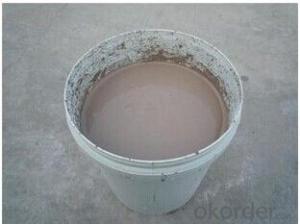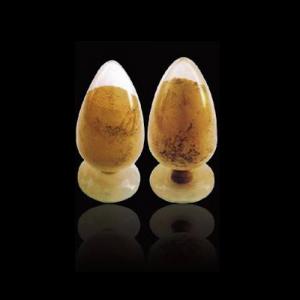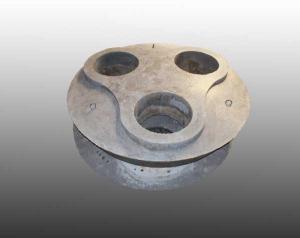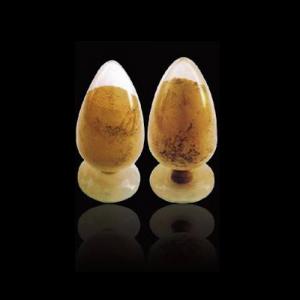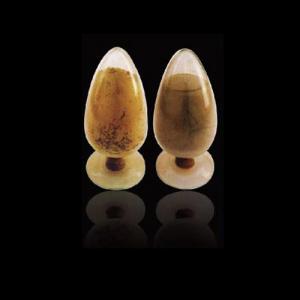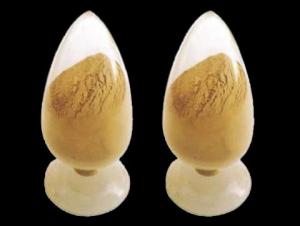High-Temperature Bonder Cement
- Loading Port:
- China Main Port
- Payment Terms:
- TT OR LC
- Min Order Qty:
- -
- Supply Capability:
- -
OKorder Service Pledge
OKorder Financial Service
You Might Also Like
TY-AZS33
Shapes and sizes: there are great variety of formats and shapes which are available for different forming and special machine processes.
Application: mainly used for working ends, feeder channel, side walls, superstructures, crowns, sidewalls, tank bottoms, C-shaped brick and doghouse crown.etc.
TY- AZS36
Shapes and sizes: This product is only available for straight brick.
Application:mainly used for side walls of flame furnaces with embedded melter bottoms, for total security with average pulls and campaign lengths, and superstructures, front wall, back wall, top crown in glass melting furnace.
TY- AZS41
Shapes and sizes: this product is available in a large size straight or approximate bricks and special formats and shapes which are available for special machining processes.
Application: Mainly used for sidewalls, doghouses, throat, bottom budding, Dam blocks, electric block corners.
Item | Behaviors | |||
TY-AZS33 | TY-AZS36 | TY-AZS41 | ||
Chemical Composition | Al2O3 | ≥50.00 | ≥49.00 | ≥45.00 |
ZrO2 | ≥32.50 | ≥35.50 | ≥40.50 | |
SiO2 | ≤15.50 | ≤13.50 | ≤13.00 | |
Na2O+K2O | ≤1.30 | ≤1.35 | ≤1.30 | |
Bulk density g/cm3 | ≥3.75 | ≥3.85 | ≥4.00 | |
Apparent Porosity % | ≤1.2 | ≤1.0 | ≤1.2 | |
Cold Crushing Strength Mpa | ≥300 | ≥300 | ≥300 | |
Exudation Temperature of Glass Phase | ≥1400 | ≥1400 | ≥1410 | |
Bubble Separation Ratio(1300°C×10h) | ≤1.5 | ≤1.4 | ≤1.0 | |
Anti-corrosion rate of glass liquid 1500°C×36h (mm/24h)% | ≤1.45 | ≤1.3 | ≤1.2 | |
Apparent density (g/cm3) | PT(RN RC N) | ≥3.45 | ≥3.50 | ≥3.70 |
ZWS(RR EVF EC ENC) | ≥3.60 | ≥3.70 | ≥3.90 | |
WS( RT VF EPIC FVP DCL) | ≥3.70 | ≥3.80 | ≥4.00 | |
- Q:What are the key properties of ramming mixes used for monolithic refractory installations?
- The key properties of ramming mixes used for monolithic refractory installations include high density, good flowability, high strength, excellent thermal shock resistance, chemical resistance, and low porosity. These properties ensure the ramming mix can be compacted easily during installation, withstand high temperatures without cracking, and resist chemical attacks from molten metals or corrosive gases. Additionally, low porosity helps to minimize heat loss and enhance the overall performance and longevity of the refractory lining.
- Q:How can the lifespan of monolithic refractories be extended in the iron and steel industry?
- Various measures can be taken to extend the lifespan of monolithic refractories in the iron and steel industry. Firstly, it is crucial to ensure proper installation and maintenance of the refractories. This includes ensuring correct shape and size for the specific application, as well as using appropriate installation techniques and materials. Regular inspections should be carried out to identify any signs of wear or damage, and immediate repairs or replacements should be made to prevent further deterioration. To significantly prolong the lifespan of monolithic refractories, effective heat management practices should be implemented. This involves monitoring and controlling temperature gradients within the refractory lining to prevent thermal shock and excessive thermal cycling. Adequate insulation and cooling systems should also be in place to maintain a stable and controlled environment. Proper handling and operation of equipment and processes also contribute to extending the refractory lifespan. Avoiding sudden temperature changes, minimizing mechanical stress and impact, and employing appropriate operating procedures can help reduce wear and tear on the refractories. Utilizing advanced refractory materials and technologies can further enhance the lifespan of monolithic refractories. High-performance and specialized refractories, such as advanced ceramics or specialized coatings, provide increased resistance to thermal and chemical degradation, ultimately extending their lifespan. Lastly, continuous research and development efforts should be undertaken to explore innovative solutions for refractory longevity in the iron and steel industry. Collaborating with suppliers, experts, and industry partners can help identify and implement new technologies and techniques that improve the durability and performance of monolithic refractories. In summary, extending the lifespan of monolithic refractories in the iron and steel industry requires proper installation and maintenance, effective heat management, careful handling and operation, utilization of advanced materials, and ongoing research and development. By implementing these strategies, the iron and steel industry can optimize refractory performance, reduce downtime, and minimize costs associated with frequent replacements.
- Q:How do monolithic refractories withstand high temperatures in iron and steel processing?
- Monolithic refractories are able to withstand high temperatures in iron and steel processing due to their unique composition and properties. These refractories are primarily made of a single, continuous material, making them highly resistant to thermal shock and mechanical stress. Additionally, they have a high melting point and excellent heat insulation properties, allowing them to maintain their integrity even in extreme heat conditions. The refractories also possess good chemical stability, preventing reactions with molten metals and other corrosive substances often encountered in iron and steel processing facilities. Overall, the combination of these features enables monolithic refractories to endure the intense temperatures and harsh conditions involved in iron and steel processing.
- Q:What are the common applications of monolithic refractories in blast furnaces?
- Monolithic refractories are commonly used in blast furnaces for various applications such as lining and repairing the hearth, taphole, and slag line, as well as for hot repairs and maintenance. These refractories provide high-temperature resistance, erosion and corrosion resistance, and thermal shock resistance, thereby ensuring the efficient and reliable operation of blast furnaces in the iron and steel industry.
- Q:What are the challenges in recycling monolithic refractories?
- There are several challenges in recycling monolithic refractories that make the process more complex compared to other materials. Firstly, monolithic refractories are designed to withstand high temperatures and harsh conditions, making them highly resistant to wear and tear. This durability also poses a challenge in the recycling process, as it requires specialized techniques and equipment to break down and separate the refractory material. Secondly, monolithic refractories often contain various additives and binders, such as clay, cement, and other organic compounds, which can complicate the recycling process. These additives may need to be removed or separated from the refractory material before it can be recycled effectively. Additionally, monolithic refractories can be contaminated with other materials, such as metal oxides, slag, and impurities, during their service life. These contaminants can affect the quality and properties of the recycled refractory material, requiring thorough cleaning and purification processes. Moreover, the logistics involved in collecting and transporting monolithic refractories for recycling can be challenging. Refractories are often used in large quantities in industrial settings, and their removal and transportation can be costly and time-consuming. Furthermore, finding suitable recycling facilities with the necessary equipment and expertise to handle monolithic refractories can be limited, especially in certain regions. Lastly, economic factors play a role in the challenges of recycling monolithic refractories. The cost of recycling and processing the refractories may not always be financially viable compared to using virgin materials. This can discourage companies from investing in recycling programs and contribute to the lower demand for recycled refractory materials. Overall, the challenges in recycling monolithic refractories mainly stem from their durability, complex composition, contamination, logistics, and economic considerations. However, advancements in technology and increased awareness of the environmental benefits of recycling may help overcome these challenges and promote the sustainable reuse of refractory materials.
- Q:How do monolithic refractories contribute to the reduction of heat loss in iron and steel plants?
- Monolithic refractories play a crucial role in reducing heat loss in iron and steel plants due to their unique properties and application methods. These refractories are composed of single, continuous materials with no joints or seams, allowing for excellent thermal insulation and minimizing heat transfer. One way monolithic refractories contribute to heat loss reduction is through their low thermal conductivity. These materials have a high resistance to heat flow, which means they can effectively prevent the loss of thermal energy from the walls and linings of furnaces, ladles, and other equipment used in iron and steel production. By providing a barrier between the hot interior and the cooler surroundings, monolithic refractories minimize heat escape and maintain a more stable and efficient thermal environment. Additionally, monolithic refractories are known for their excellent adhesion and high strength, which enables them to form a tight seal and eliminate gaps or cracks in the lining of the equipment. This prevents the ingress of cold air or the escape of hot gases, further reducing heat loss and ensuring the desired operating temperatures are maintained. Furthermore, monolithic refractories can be easily applied and repaired, allowing for a more efficient and cost-effective maintenance process. Regular inspections and repairs can be carried out to address any wear or damage to the refractory lining, ensuring its optimal performance and minimizing heat loss over time. In summary, monolithic refractories contribute to the reduction of heat loss in iron and steel plants through their low thermal conductivity, excellent adhesion, and high strength. By effectively insulating the equipment and preventing heat escape, these refractories contribute to a more energy-efficient and productive operation in the iron and steel industry.
- Q:How do monolithic refractories perform in reheating furnace applications?
- Monolithic refractories perform exceptionally well in reheating furnace applications due to their excellent thermal shock resistance, high temperature stability, and superior insulation properties. They are able to withstand the extreme temperatures and rapid temperature changes that occur during the reheating process, ensuring consistent and efficient heat distribution. Additionally, their flexible and easy-to-install nature makes them an ideal choice for lining the complex geometries of reheating furnaces, resulting in improved performance and extended service life.
- Q:How do monolithic refractories perform in high-temperature environments?
- Due to their unique characteristics, monolithic refractories are highly effective in high-temperature environments. Unlike traditional refractories made of multiple bricks or tiles, these refractories are composed of a single, continuous composition. This monolithic structure offers several advantages when it comes to performance in high-temperature conditions. First and foremost, monolithic refractories exhibit excellent thermal shock resistance. They can endure rapid temperature changes without cracking or spalling. While high temperatures can impose significant stress on materials, the monolithic structure allows for better expansion and contraction, minimizing the risk of damage. Furthermore, monolithic refractories possess high resistance to chemical attack. In high-temperature environments, aggressive chemical agents are often present, which can corrode and erode traditional refractory materials. However, the monolithic composition is typically designed to be chemically inert, creating a protective barrier against these corrosive elements. Moreover, monolithic refractories offer superior strength and durability at high temperatures. Their single composition ensures a dense and compact structure, reducing the likelihood of cracking or breaking under extreme thermal conditions. This strength enables them to maintain their integrity and performance even in the most demanding environments. Additionally, monolithic refractories can be easily installed and repaired. Unlike traditional refractories that demand precise brick or tile placement, monolithic materials can be poured or sprayed into place, adapting to any shape or size. This flexibility expedites installation, making it more cost-effective and reducing downtime and maintenance costs. Overall, monolithic refractories excel in high-temperature environments due to their thermal shock resistance, chemical inertness, durability, and ease of installation. Their capacity to withstand extreme heat and harsh conditions makes them the preferred choice for industries such as steel, cement, glass, and petrochemicals, where high temperatures are prevalent.
- Q:Can monolithic refractories be used in electric arc furnaces and induction furnaces?
- Yes, monolithic refractories can be used in both electric arc furnaces and induction furnaces. Monolithic refractories are versatile and can withstand the high temperatures and thermal shocks generated in these types of furnaces. They are often preferred due to their ease of installation, improved energy efficiency, and suitability for various furnace lining applications.
- Q:What are the advantages of using low-cement castables in the iron and steel industry?
- There are several advantages of using low-cement castables in the iron and steel industry. Firstly, low-cement castables have a lower water requirement compared to conventional castables. This means that less water is needed during the installation process, resulting in a quicker and more efficient installation. Additionally, low water content leads to better strength development and reduced drying time, allowing for faster turnaround times in the production process. Secondly, low-cement castables offer superior resistance to thermal shocks and high temperatures. The iron and steel industry operates at extremely high temperatures, and low-cement castables have excellent refractory properties that can withstand these harsh conditions. This ensures a longer service life for the refractory lining and reduces the need for frequent repairs or replacements. Furthermore, low-cement castables exhibit excellent mechanical strength and abrasion resistance. The iron and steel industry involves the handling of heavy materials and abrasive substances, which can cause wear and tear on the refractory lining. Low-cement castables have the ability to withstand these mechanical stresses, thereby increasing the durability and longevity of the lining. Moreover, low-cement castables have a low porosity and high density, which results in reduced permeability. This makes them highly resistant to alkali attacks, chemical corrosion, and slag penetration, which are common challenges faced in the iron and steel industry. By using low-cement castables, the risk of refractory failure due to these corrosive elements is minimized. Lastly, low-cement castables offer improved energy efficiency. Their lower thermal conductivity means that less heat is conducted through the refractory lining, resulting in reduced heat losses. This leads to energy savings, as less heat is wasted and more heat is retained in the system. This is particularly advantageous in the iron and steel industry, where energy costs can be significant. In summary, the advantages of using low-cement castables in the iron and steel industry include reduced water requirement, superior thermal resistance, enhanced mechanical strength, improved resistance to chemical corrosion, and increased energy efficiency. These benefits contribute to overall cost savings, increased productivity, and improved operational performance in the iron and steel manufacturing process.
1. Manufacturer Overview |
|
|---|---|
| Location | |
| Year Established | |
| Annual Output Value | |
| Main Markets | |
| Company Certifications | |
2. Manufacturer Certificates |
|
|---|---|
| a) Certification Name | |
| Range | |
| Reference | |
| Validity Period | |
3. Manufacturer Capability |
|
|---|---|
| a)Trade Capacity | |
| Nearest Port | |
| Export Percentage | |
| No.of Employees in Trade Department | |
| Language Spoken: | |
| b)Factory Information | |
| Factory Size: | |
| No. of Production Lines | |
| Contract Manufacturing | |
| Product Price Range | |
Send your message to us
High-Temperature Bonder Cement
- Loading Port:
- China Main Port
- Payment Terms:
- TT OR LC
- Min Order Qty:
- -
- Supply Capability:
- -
OKorder Service Pledge
OKorder Financial Service
Similar products
New products
Hot products
Related keywords
